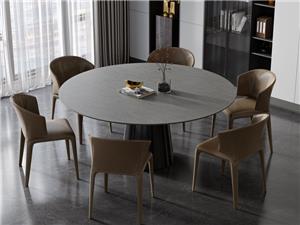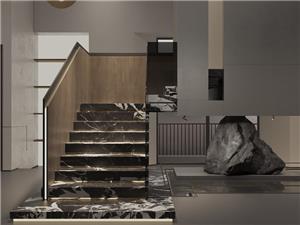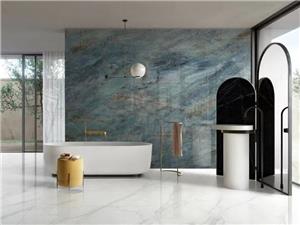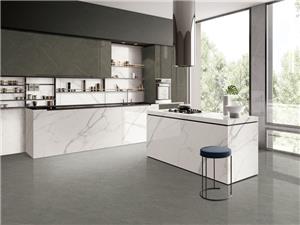Innovative Application of Sintered Stone in Interior Design
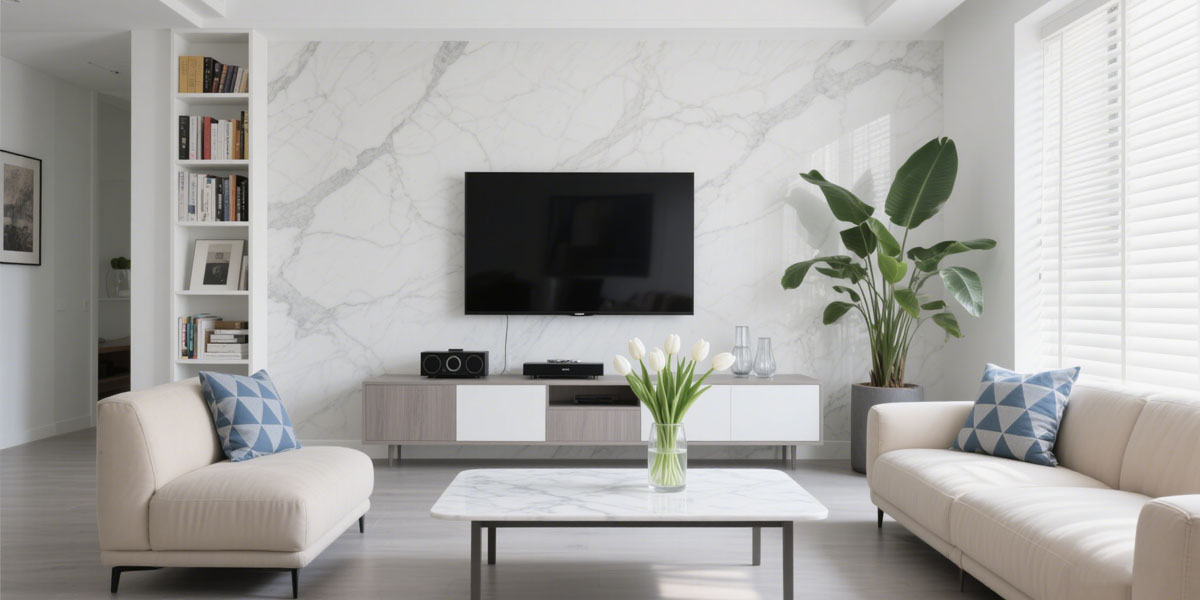
In the current field of interior design, slabs are triggering an unprecedented transformation in the space. This new type of material, born in Bologna, the ceramic capital of Italy, has become a new favorite in the eyes of designers and property owners with its outstanding performance and diverse design possibilities. It is widely and ingeniously integrated into various interior Spaces, reshaping the aesthetics and functionality of space.
The characteristics of sintered stone: a perfect blend of performance and aesthetics
Sintered stone is made from raw materials such as ores, stone powder and clay, and are fired at a high temperature above 1200℃ through a 10,000-ton press system. The unique manufacturing process endows the rock plate with numerous excellent properties. It has extremely high strength, being more solid and less prone to cracking compared to traditional tiles. It is made from raw materials such as clay and quartz sand with higher aluminum content. During manufacturing, a press with higher strength is used to form a calcium feldspar multi-crystal phase, effectively releasing the stress between the crystal phases. Meanwhile, the rock plate features outstanding wear resistance, scratch resistance, stain resistance, corrosion resistance and high-temperature resistance. Its fire resistance rating meets high standards, allowing it to come into direct contact with food. It has an extremely low water absorption rate and can be easily wiped clean during daily cleaning.
In terms of aesthetics, sintered stone are no less impressive. With the aid of advanced texture design technology, its patterns are rich and diverse, capable of precisely simulating the texture and feel of various natural materials such as stone, wood grain, and cement. It can even present unique continuous pattern designs, such as ink-wash painting and wabi-sabi cement effects, creating different atmospheres of avant-garde, natural or light luxury for the space. The emergence of large-sized rock plates (such as 1200×2700mm) has further reduced the joints, achieving the visual effect of "one plate reaching the ceiling" and "large-scale laying", enhancing the overall sense and continuity of the space, and meeting the demands of personalized customization.
The diverse applications of rock plates in interior Spaces
Living room: Highlighting the spatial temperament
As the core area for family activities and socializing, the living room is widely used for rock slabs. The ground is fully paved with sintered stone slabs, which can extend the visual sense of space and create an open and grand atmosphere.
Choosing sintered stone for the TV background wall can also enhance the spatial style. In the case of classic rock plate tiles, calacatta white marble, a sintered stone with a lustrous white base color and classic texture, was selected as the TV background wall, injecting an unobtrusive sense of luxury into the space. In another 160-square-meter modern Italian-style large flat, the TV background wall is made of luxury stone slabs, which contrast with the overall color tone and highlight an extraordinary aesthetic taste.
Kitchen: It combines functionality and aesthetics
The kitchen environment has strict requirements for the performance of materials, and rock plates are just the perfect fit. The rock plate countertop is heat-resistant, stain-resistant, wear-resistant and easy to clean. It can withstand the placement of high-temperature cooking utensils. Daily oil stains can be removed with a gentle wipe. In an open kitchen and dining space, L-shaped open cabinets paired with a rock plate bar counter have become a common design. The bar counter is perfectly connected to the dining table, increasing the operation and storage space in the kitchen.
Bathroom: Creating a quality space
The bathroom is often in a damp environment. The waterproof, moisture-proof and antibacterial properties of rock slabs make them an ideal material choice. Laying rock slabs on both the walls and the floor can create a simple and unified spatial effect and reduce hygiene dead corners. In the master bathroom, rock slabs can be used to create countertops around the bathtub, bathroom cabinets, etc., enhancing the texture of the space. In the secondary bathroom of a certain case, the walls and floor are all covered with specific rock slabs. The toilet area is decorated with blue rock slabs of 2700×1200mm in size for a color-blocking combination, adding an artistic sense and visual layering.

